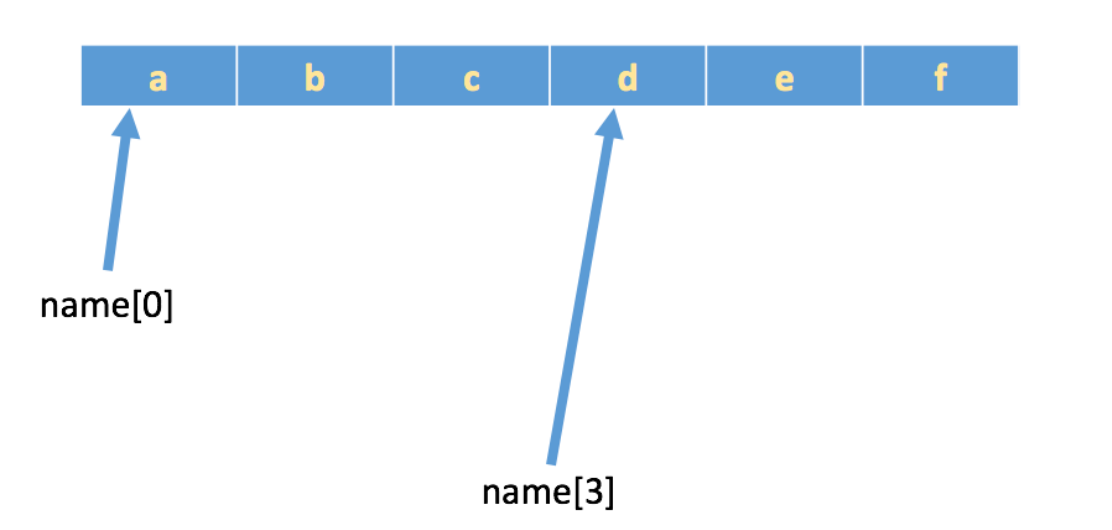python基础--字符串
2021-04-01 15:25
标签:返回 常用操作 spl 组成 world nice mic 空白 font 一,认识字符串 字符串是python中最常用的数据类型,我们一般使用引号来创建字符串。创建字符串很简单,只要为变量分配一个值即可。 执行结果为str类型: 字符串特征: 一对引号字符串 三引号字符串 注意:三引号形式的字符串支持换行 如何创建一个字符串I‘m Tom? 1.2,字符串输出 1.3,字符串输入 在python中,使用input()接受用户输入。 代码: 输入结果: 二,下标 下标 又叫索引,就是编号,比如火车座位号,座位号的作用:按照编号快速找到对应的座位,同理,下标的作用即是通过下标快速找到对应的数据。 2.1,快速体验 需求:字符串name = "abcdef",取到不同下标对应的数据 代码: 输出结果: 注意:下标从0开始计算 三、切片 切片是指对操作的对象截取其中一部分的操作。字符串、列表、元组都支持切片操作 语法: 注意: 1,不包含结束位置下标对应的数据,正负整数均可 2,步长是选取间隔,正负整数均可,默认步长为1 3.1体验 四、常用操作方法 字符串的常用操作方法有查找、修改、和判断三大类 4.1查找 所谓字符串查找方法即是查找字符串在字符串中的位置或出现的次数。 ····find():检测某个子串是否包含在这个字符串中,如果在返回这个子串开始的位置下标,否则则返回-1 1,语法 注意:开始和结束位置下标可以省略,表示在整个字符串序列中查找。 2,快速体验 index():检测某个子串是否包含在这个字符串中,如果在返回这个子串开始的位置下标,否则则报异常 1,语法: 注意:开始和结束位置下标可以省略,表示在整个字符串序列中查找。 2,快速体验: 输出结果:有报错-1 1,count语法 注意:开始和结束位置下标可以省略,表示在整个字符串序列中查找。 2,快速体验 4.2,修改 所谓修改字符串,指的就是通过函数的形式修改字符串中的数据 replace():替换 1,语法 注意:替换次数如果查出子串出现次数,则替换次数为该子串出现次数 2,快速体验 注意:数据按照是否能直接修改分为可变类型和不可变类型两种。字符串类型的数据修改的时候不能改变原有字符串,数据不能直接修改数据的类型即是不可变类型 split():按照指定字符分割字符串 1,语法: 注意:num表示的是分割字符出现的次数,即将来返回数据个数为num+1个 2,快速体验; 注意:如果分割字符是原有字符串中的子串,分割后则丢失该子串 ```join():用一个字符或子串合并字符串,即是将多个字符串合并为一个新的字符串。 1,语法: 2,快速体验 ·····capitalize():将字符串第一个字符转换为大写 注意:capitalize()函数转换后,只转换第一个字符串第一个字符的大写,其他的字符全都是小写 title():将字符串每个单词首字母转换为大写 lower():将字符串中的大写转换为小写 upper():将字符串中的小写转换为大写 lstrip():删除字符串左侧空白字符 rstrip():删除字符串右侧空白字符 strip():删除字符串两侧空白字符 ljust():返回一个原字符穿左对齐,并使用指定字符(默认空格)填充至对应长度的新字符串。 1,语法: rjust():返回一个原字符右对齐,并使用指定字符(默认空格)填充至对应长度的新字符串,语法和ljust相同 center():返回一个原字符串居中对齐,并使用指定字符(默认空格)填充至对应长度的新字符串,语法和ljust相同 4.3,判断 所谓判断即是判断真假,返回的结果是布尔型数据类型:True或Flase ```startswith():检查字符串是否以指定子串开头,是则返回True,否则返回False,如果设置开始和结束位置下标,则在指定范围内检查 1,语法 2,快速体验 endswith()::检查字符串是否是以指定子串结尾,是则返回 True,否则返回 False。如果设置开 1,语法: 2,快速体验 isalpha():如果字符串至少有一个字符并且所有字符都是字?则返回 True, 否则返回 False。 isdigit():如果字符串只包含数字则返回 True 否则返回 False。 isalnum():如果字符串至少有一个字符并且所有字符都是字母或数字则返 回 True,否则返回 isspace():如果字符串中只包含空白,则返回 True,否则返回 False。 总结: 常用的操作方法: find() index() python基础--字符串 标签:返回 常用操作 spl 组成 world nice mic 空白 font 原文地址:https://www.cnblogs.com/chenpeng03/p/13467158.htmla = ‘hello world‘
b = "ddddffsadfdsf"
print(type(a))
print(type(b))

name1 = ‘Tom‘
name2 = "Rose"
name3 = ‘‘‘ Tom ‘‘‘
name4 = """ Rose """
a = ‘‘‘ i am Tom ,
nice to meet you !‘‘‘
b = """ i an Role ,
nice to meet you! """
c = "I‘m Tom"
d = ‘I\‘m Tom‘
print(‘hello world‘)
name = ‘Tom‘
print(‘我的名字是%s‘ % name)
print(f‘我的名字是{name}‘)
name = input(‘请输入您的名字:‘)
print(f‘您输入的名字是{name}‘)
print(type(name))
passwd = input(‘请输入您的密码:‘)
print(f‘您输入的密码是{passwd}‘)
print(type(passwd))

name = ‘abcdefg‘
print(name[1])
print(name[0])
print(name[2])


序列【开始位置下标:结束位置下标:步长】
name = ‘abcdefg‘
print(name[2:5:1]) # cde
print(name[2:5]) # cde(默认步长为1)
print(name[:5]) # abcde
print(name[1:]) # bcdefg
print(name[:]) # abcdefg
print(name[::2]) # aceg
print(name[:-1]) # abcdef
print(name[-4:-1]) # def
print(name[::-1]) # gfedcba -1位倒叙
字符串序列.find(子串,开始位置下标,结束位置下标)
mystr = "hello world and itcast and itheima and Python"
print(mystr.find(‘and‘)) # 12
print(mystr.find(‘and‘,15,30)) # 23
print(mystr.find(‘ands‘)) # -1
字符串序列.index(子串,开始位置下标,结束位置下标)
mystr = "hello world and itcast and itheima and Python"
print(mystr.index(‘and‘)) # 12
print(mystr.index(‘and‘,15,30)) # 23
print(mystr.index(‘ands‘)) # -1

rfind(): 和find()功能相同,但查找方向为右侧开始。
rindex():和index()功能相同,但查找方向为右侧开始。
count():返回某个子串在字符串中出现的次数
字符串序列.count(子串,开始位置下标,结束位置下标)
mystr = "hello world and itcast and itheima and Python"
print(mystr.count(‘and‘)) # 3
print(mystr.count(‘and‘,15,30)) # 1
print(mystr.count(‘ands‘)) # 0
字符串序列.replace(旧子串,新子串,替换次数)
mystr = "hello world and itcast and itheima and Python"
#结果:hello world and itcast and itheima and Python
print(mystr.replace(‘and‘,‘chen‘))
#结果:hello world chen itcast chen itheima chen Python
print(mystr.replace(‘and‘,‘chen‘,2))
#结果:hello world chen itcast chen itheima and Python
print(mystr)
字符串序列.split(分割字符,num)
mystr = "hello world and itcast and itheima and Python"
print(mystr.split(‘and‘))
#结果:[‘hello world ‘, ‘ itcast ‘, ‘ itheima ‘, ‘ Python‘]
print(mystr.split(‘and‘,2))
#结果:[‘hello world ‘, ‘ itcast ‘, ‘ itheima and Python‘]
print(mystr.split(‘ ‘))
#结果:[‘hello‘, ‘world‘, ‘and‘, ‘itcast‘, ‘and‘, ‘itheima‘, ‘and‘, ‘Python‘]
print(mystr.split(‘ ‘,2))
#结果:[‘hello‘, ‘world‘, ‘and itcast and itheima and Python‘]
字符或子串.join(多字符串组成的序列)
list1 = [‘wo‘,‘jiao‘,‘chen‘,‘peng‘]
t1 = (‘aa‘,‘b‘,‘cc‘,‘dd‘)
print(‘_‘.join(list1))
#结果:wo_jiao_chen_peng
print(‘....‘.join(t1))
#结果:aa....b....cc....dd
mystr = "hello world and itcast and itheima and Python"
print(mystr.capitalize())
#结果:Hello world and itcast and itheima and python
mystr = "hello world and itcast and itheima and Python"
print(mystr.title())
#结果:Hello World And Itcast And Itheima And Python
mystr = "hello world and itcast and itheima and Python"
print(mystr.lower())
#结果:hello world and itcast and itheima and python
字符串序列.ljust(长度,填充字符)
字符串序列.startswith(子串,开始位置下标,结束位置下标)
mystr = "hello world and itcast and itheima and Python"
print(mystr.startswith(‘hello‘))
#结果:True
print(mystr.startswith(‘hello‘,5,20))
#结果:False
始和结束位置下标,则在指定范围内检查。字符串序列.endswith(?串, 开始位置下标, 结束位置下标)
mystr = "hello world and itcast and itheima and Python"
# 结果:True
print(mystr.endswith(‘Python‘))
# 结果:False
print(mystr.endswith(‘python‘))
# 结果:False
print(mystr.endswith(‘Python‘, 2, 20))
mystr1 = ‘hello‘
mystr2 = ‘hello12345‘
# 结果:True
print(mystr1.isalpha())
# 结果:False
print(mystr2.isalpha())
mystr1 = ‘aaa12345‘
mystr2 = ‘12345‘
# 结果: False
print(mystr1.isdigit())
# 结果:False
print(mystr2.isdigit())
False。mystr1 = ‘aaa12345‘
mystr2 = ‘12345-‘
# 结果:True
print(mystr1.isalnum())
# 结果:False
print(mystr2.isalnum())
mystr1 = ‘1 2 3 4 5‘
mystr2 = ‘ ‘
# 结果:False
print(mystr1.isspace())
# 结果:True
print(mystr2.isspace())